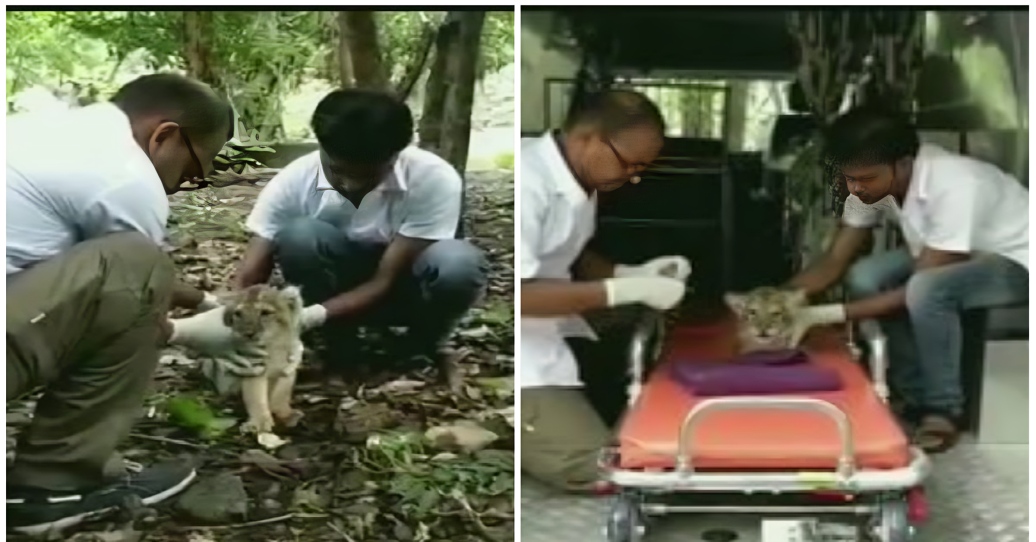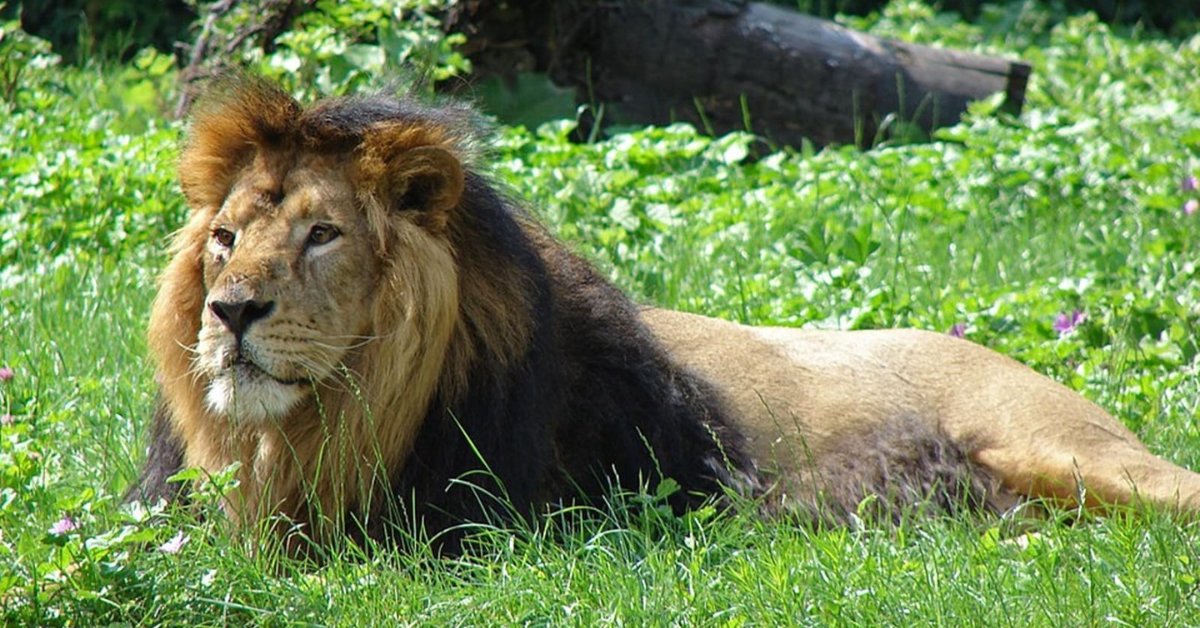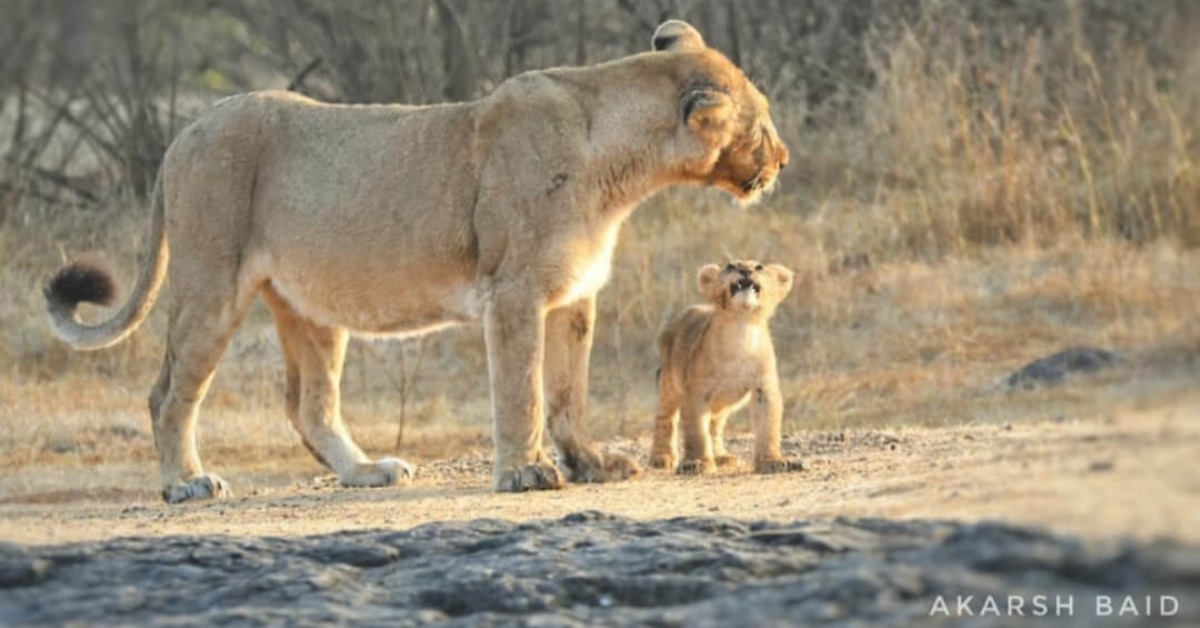A 32% Surge in Just 5 Years: What’s Fuelling the Remarkable Rise of Gujarat’s Asiatic Lions?
I visited Gir a few years ago, hoping, like most visitors, to see the lions that have made this part of Gujarat famous. We waited for hours, scanning the dry grass and scattered trees, wondering if we’d be lucky. And then, there they were—a small pride moving across the open land, unhurried, following a path they’ve probably walked for generations. They barely glanced in our direction.
Even then, their survival felt uncertain. Asiatic lions once roamed from Persia to India, but over the centuries, their world shrank, until Gujarat became their last refuge. For years, many wondered if even this small stronghold would be enough to save them.
 Once limited to Gir’s forests, Gujarat’s lions now roam farmlands, plantations, scrublands — and even near highways.
Once limited to Gir’s forests, Gujarat’s lions now roam farmlands, plantations, scrublands — and even near highways.
The numbers that changed the mood
Things have slowly begun to turn. In 2020, Gujarat’s census counted 674 lions. Five years later, that number stands at 891 — a 32 percent increase. Behind these numbers is a rare combination of factors: farmers learning to share space, fast-moving rescue teams, careful tracking, and years of patient coexistence.
In conservation, where so many stories lean the other way, this rise feels meaningful.
 Today, nearly half of Gujarat’s lions live outside protected forests — a rare example of people and wildlife learning to share space.
Today, nearly half of Gujarat’s lions live outside protected forests — a rare example of people and wildlife learning to share space.
But it’s not just about how many lions there are — it’s also about where they’re going. For years, most lions stayed inside Gir National Park. Now, they’ve ventured far beyond it. Today, their range covers nearly 35,000 square kilometres, stretching across 11 districts and 58 talukas in Saurashtra.
Out of the total, 384 lions still live inside Gir’s forests. But more than half—507—have made their homes in smaller sanctuaries like Mitiyala, Pania, Girnar, and Barda, and even along the coastal edges near Porbandar.
This roaring comeback didn’t happen by chance. It’s the result of many steady efforts coming together over years.
People who’ve learned to share space
In Gujarat, many farmers and villagers don’t see lions as intruders. They’ve grown used to spotting them near farms or village edges, pausing to let them pass. For many, lions have become a part of everyday life.
Rescue teams always nearby
Occasionally, lions fall into open wells or get injured. Forest department teams respond quickly — pulling animals out, treating wounds, and tracking their recovery. Very few wild animals anywhere in the world are as closely cared for.
 Rescue teams respond quickly when lions fall into open wells or get injured — few wild species receive this level of hands-on care. (Picture source: India TV News)
Rescue teams respond quickly when lions fall into open wells or get injured — few wild species receive this level of hands-on care. (Picture source: India TV News)
A census that involved thousands
The recent lion count was no small task. Over 3,000 forest officers, researchers, and volunteers spent days in the field, using cameras, GPS collars, and patient tracking to document each lion’s movement.
A land that still offers just enough
Gir’s dry forests aren’t vast, but they continue to provide enough prey and shelter for these lions to raise their cubs and grow their prides. So far, nature has kept pace with their slow return.
A growing pride spreading further out
As their numbers have grown, so has the ground they cover. Back in 1990, most lions were still inside Gir’s forests. But slowly, they’ve spread further out — and today, their range is more than five times what it once was.
Interestingly, while the area they roam has grown by over 400 percent, the population itself hasn’t grown quite as fast — about 200 percent over the same period. That means more and more lions are living in smaller groups, scattered across farmlands, plantations, scrublands, and even close to highways and villages.
 Over 3,000 people — forest officers, researchers, volunteers — took part in Gujarat’s latest lion census, using GPS collars, cameras and field tracking.
Over 3,000 people — forest officers, researchers, volunteers — took part in Gujarat’s latest lion census, using GPS collars, cameras and field tracking.
For many locals, seeing a lion walking across a field or resting under a tree isn’t something extraordinary anymore — it’s simply part of life in this part of Gujarat. So far, this unusual sharing of space has worked, helped by rescue teams who step in quickly when needed, and by the quiet understanding communities have built over time. But as the lions continue to explore new ground, conservation teams know they will need to keep adapting along the way.
Why experts envision a second home for the lions
For years, scientists have recommended creating another habitat for these lions outside Gujarat. Kuno Wildlife Sanctuary in Madhya Pradesh has long been proposed as an ideal second home.
The idea is simple: if all the lions remain in one place, they’re more vulnerable to disease outbreaks or natural disasters. Spreading them out could ease the pressure on Gir and make the entire population more secure.
How people, nature & lions are sharing space
The lions’ return isn’t just about counting how many are left. It’s about what their survival says about people, nature, and how the two can share space.
- From near extinction to steady recovery: Not too long ago, Asiatic lions were listed as Critically Endangered. Today, they’ve moved to the Endangered category — not out of danger, but a sign that slow, steady care is making a difference.
- When people and wildlife learn to live side by side: This isn’t just a story of strict rules or protected zones. Across Gujarat, families have learned how to live alongside lions, adjusting routines and quietly making space for them.
- Predators that keep nature in balance: As top hunters, lions help control herbivore numbers, which keeps the entire ecosystem healthier — from grasslands to smaller animals that depend on them.
- A livelihood woven into the landscape: For many families around Gir, lion tourism brings steady income. Protecting lions isn’t just about the animals — it’s become part of how people make a living, too.
 Gir’s dry forests aren’t vast, but still offer enough prey and shelter for lions to raise cubs and slowly grow their prides.
Gir’s dry forests aren’t vast, but still offer enough prey and shelter for lions to raise cubs and slowly grow their prides.
What still deserves attention
Even with all the progress, looking after the lions is a job that doesn’t end. Conservationists often say it’s about staying just a little ahead of the next challenge:
- Covering open wells, where lions can accidentally fall.
- Slowing traffic along roads where lions often cross.
- Making sure new development doesn’t eat into the spaces they now call home.
And one day, finally creating that second home in Madhya Pradesh, so the entire species isn’t depending on one patch of land alone.
A recovery still unfolding
In a world filled with worrying headlines, it’s comforting to know that somewhere in Gujarat, 891 lions are still out there. They walk under the open skies, raise their cubs, hunt, rest, and continue a story that, for a long time, seemed like it might end. But it hasn’t. Not yet. And that, in itself, feels like something worth holding on to.
News